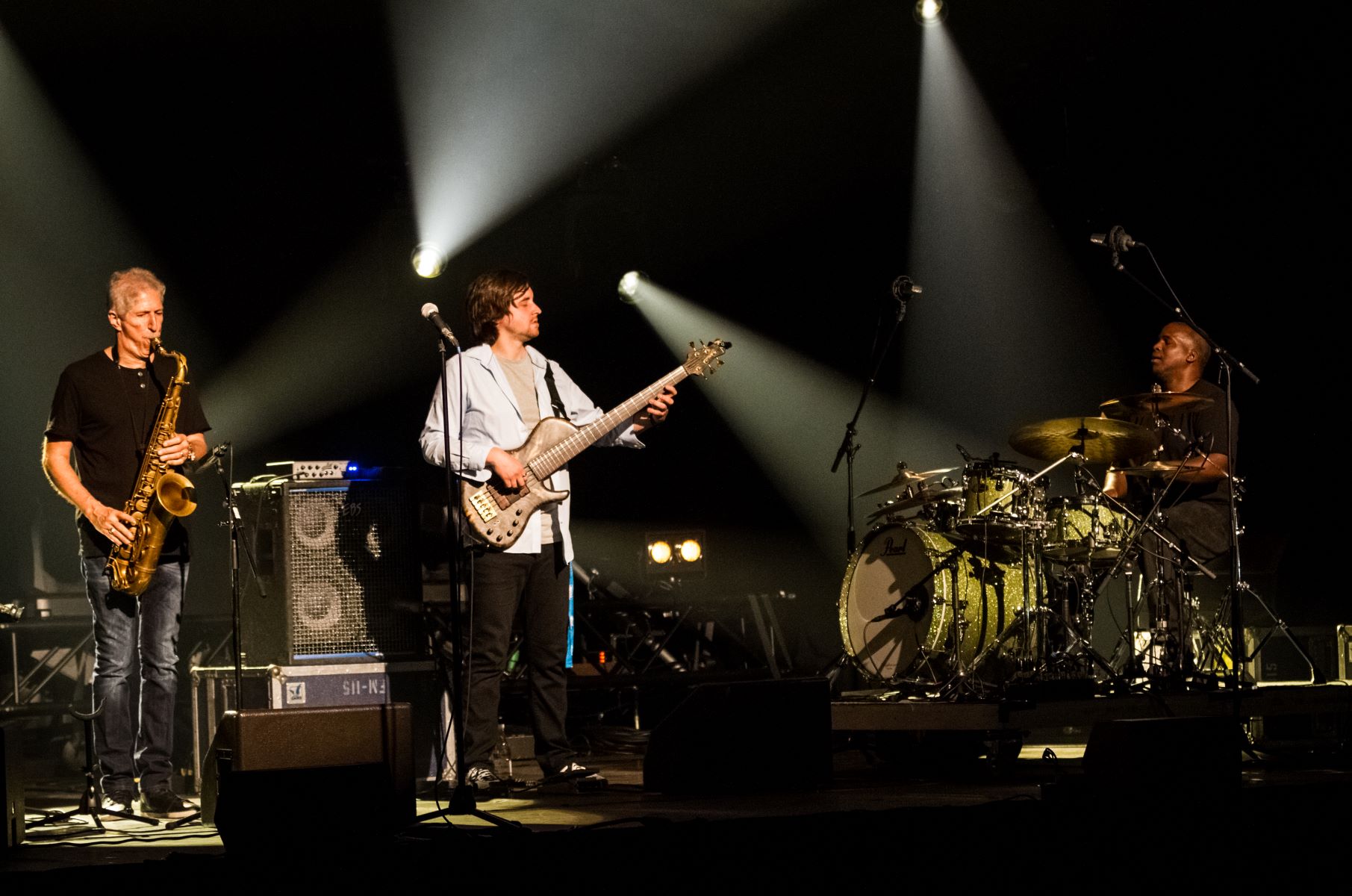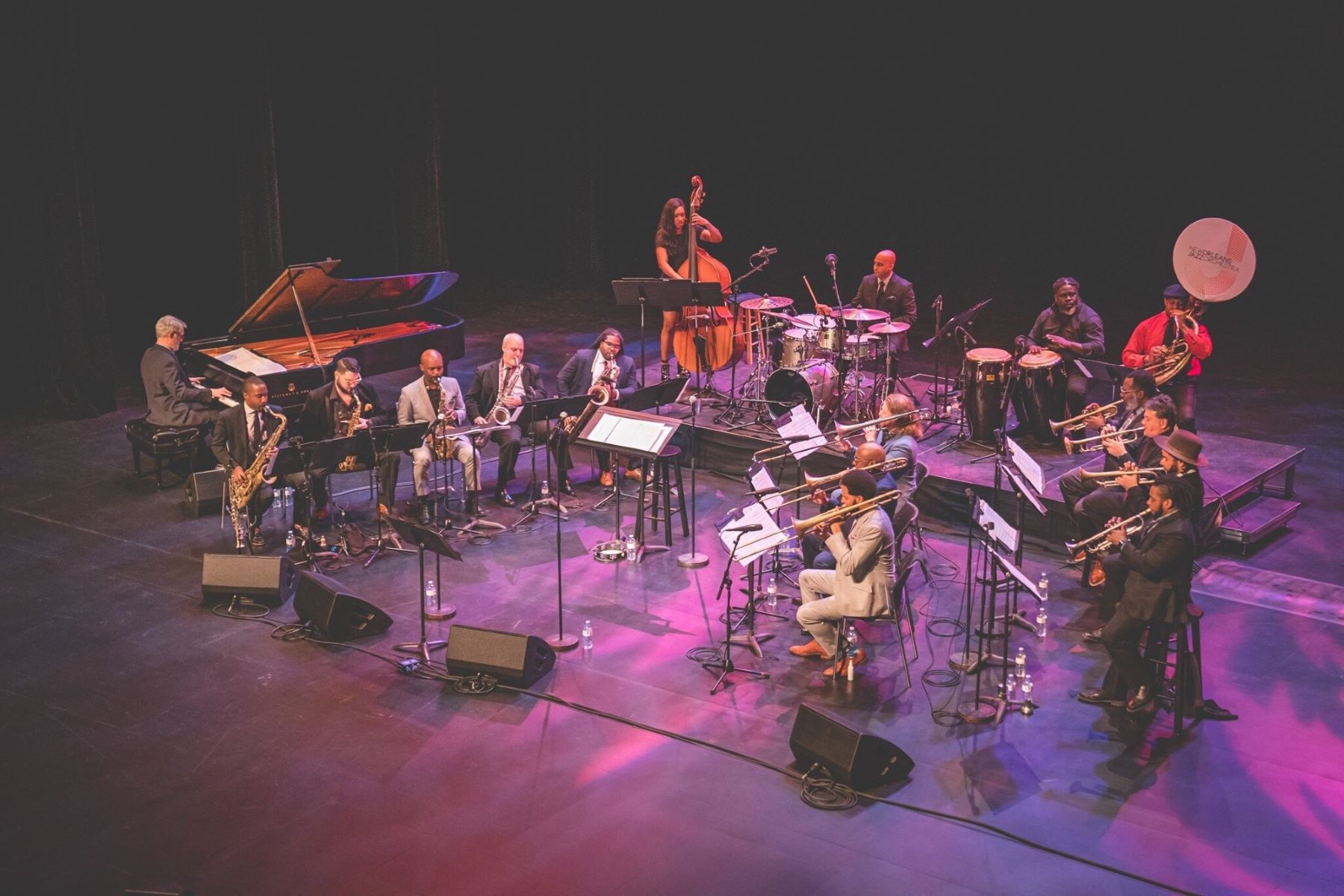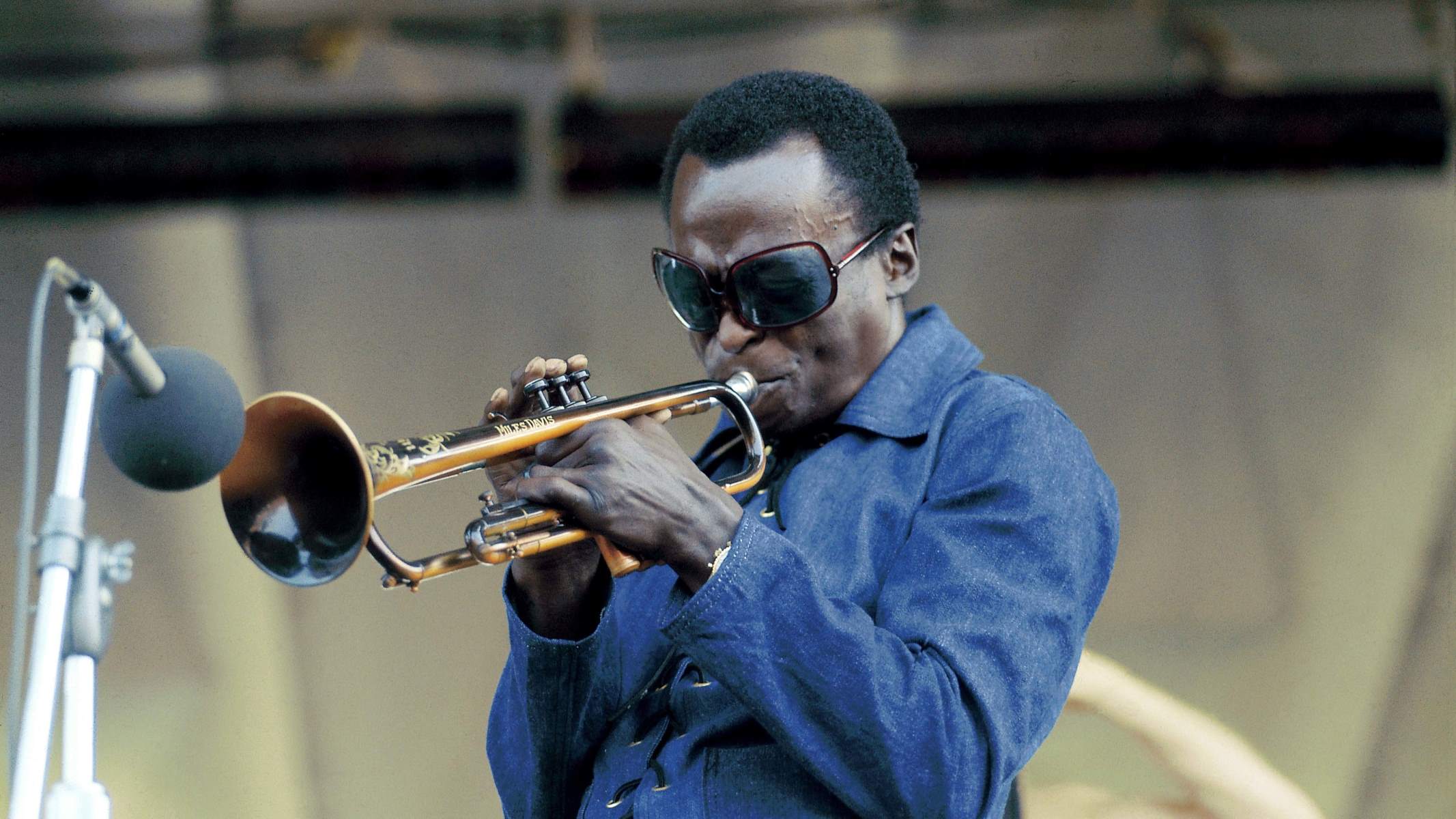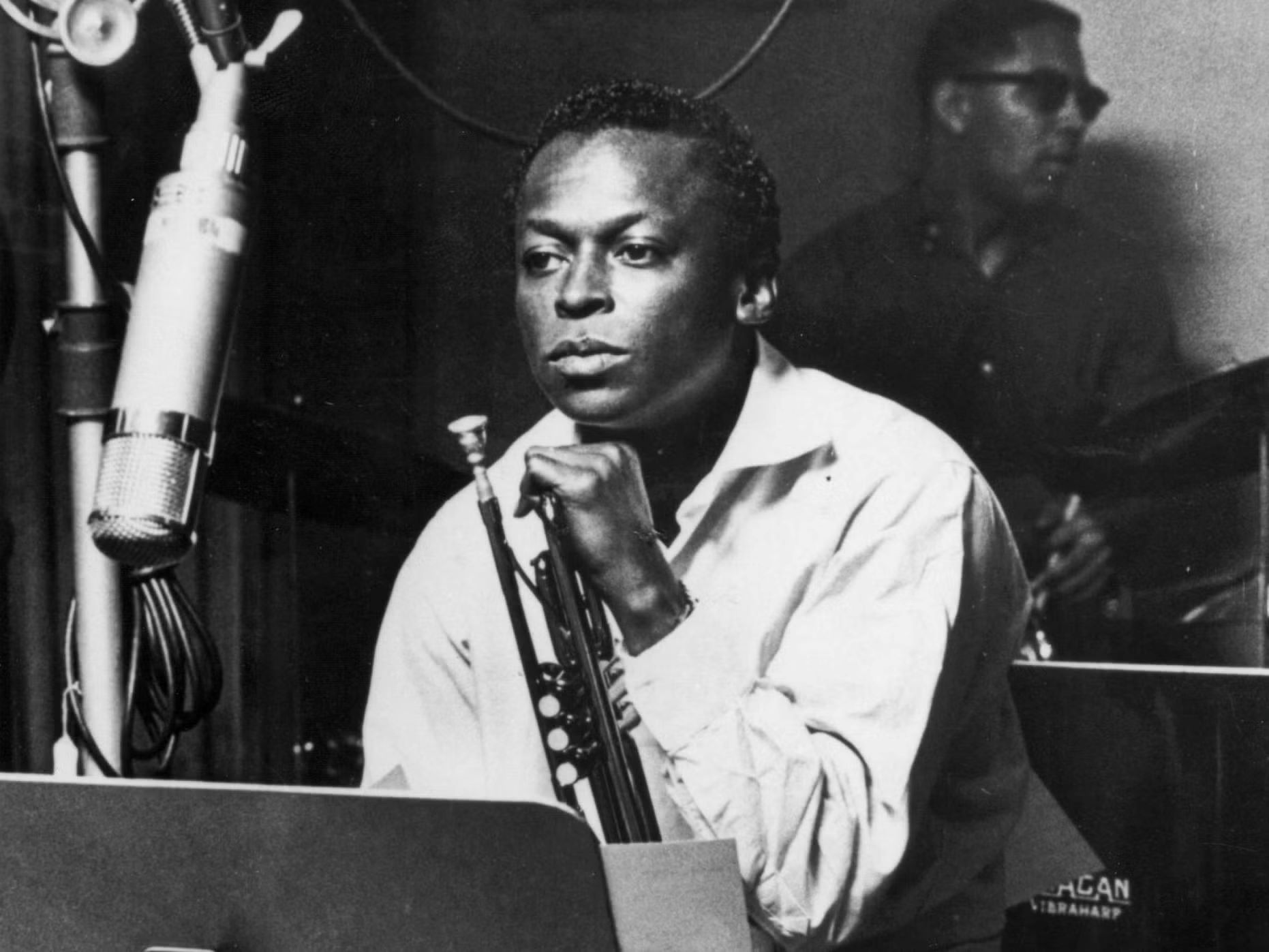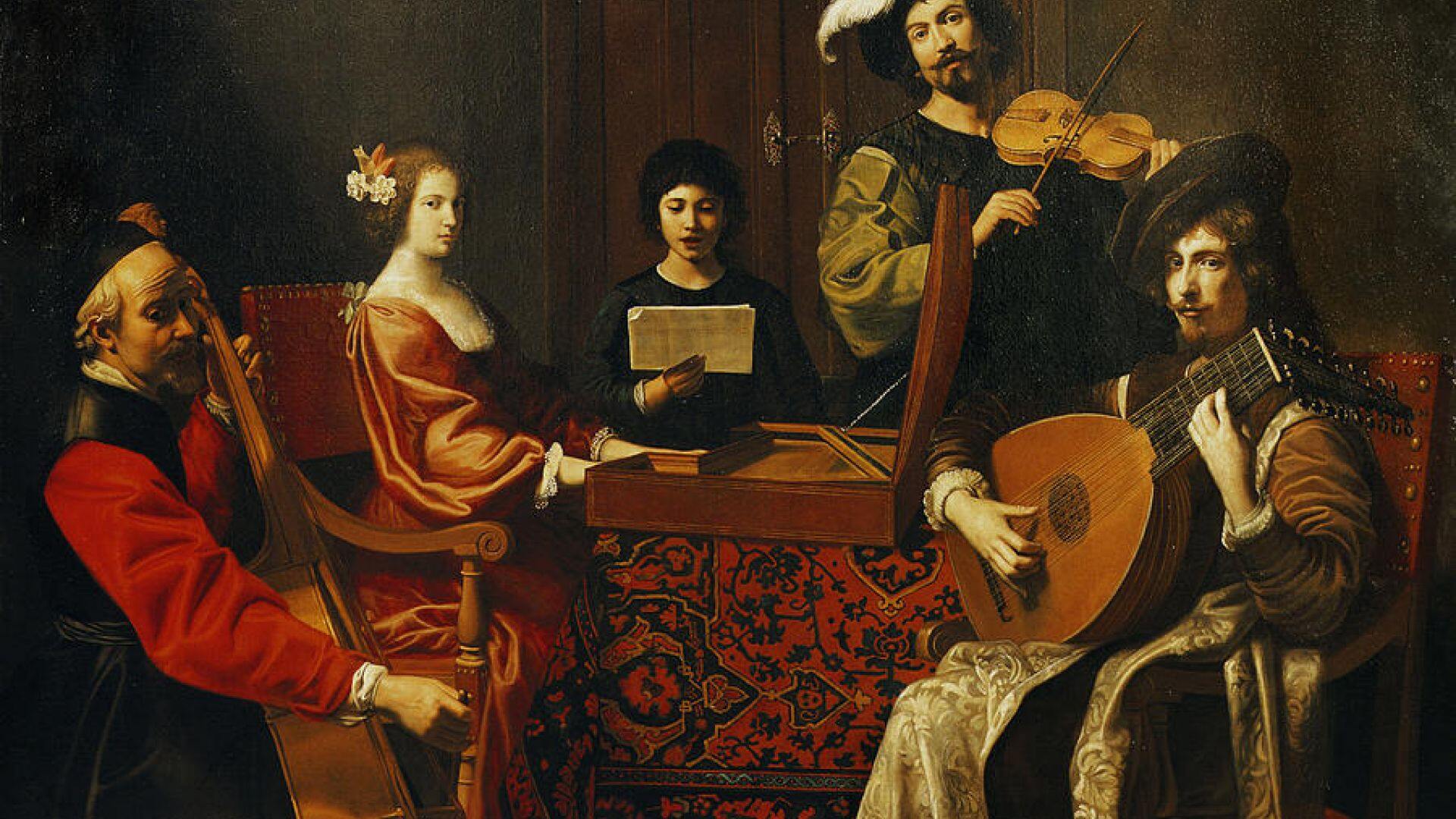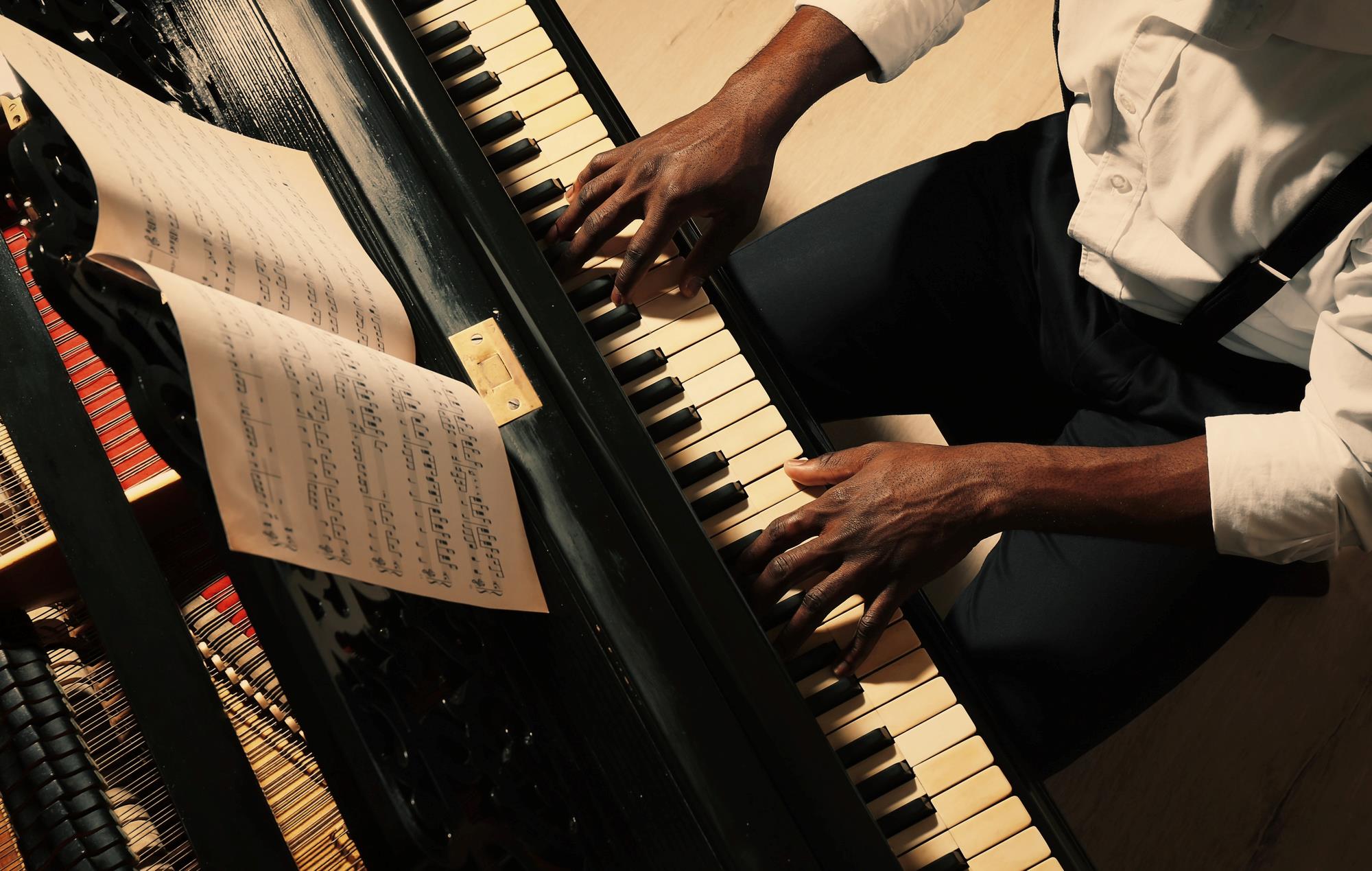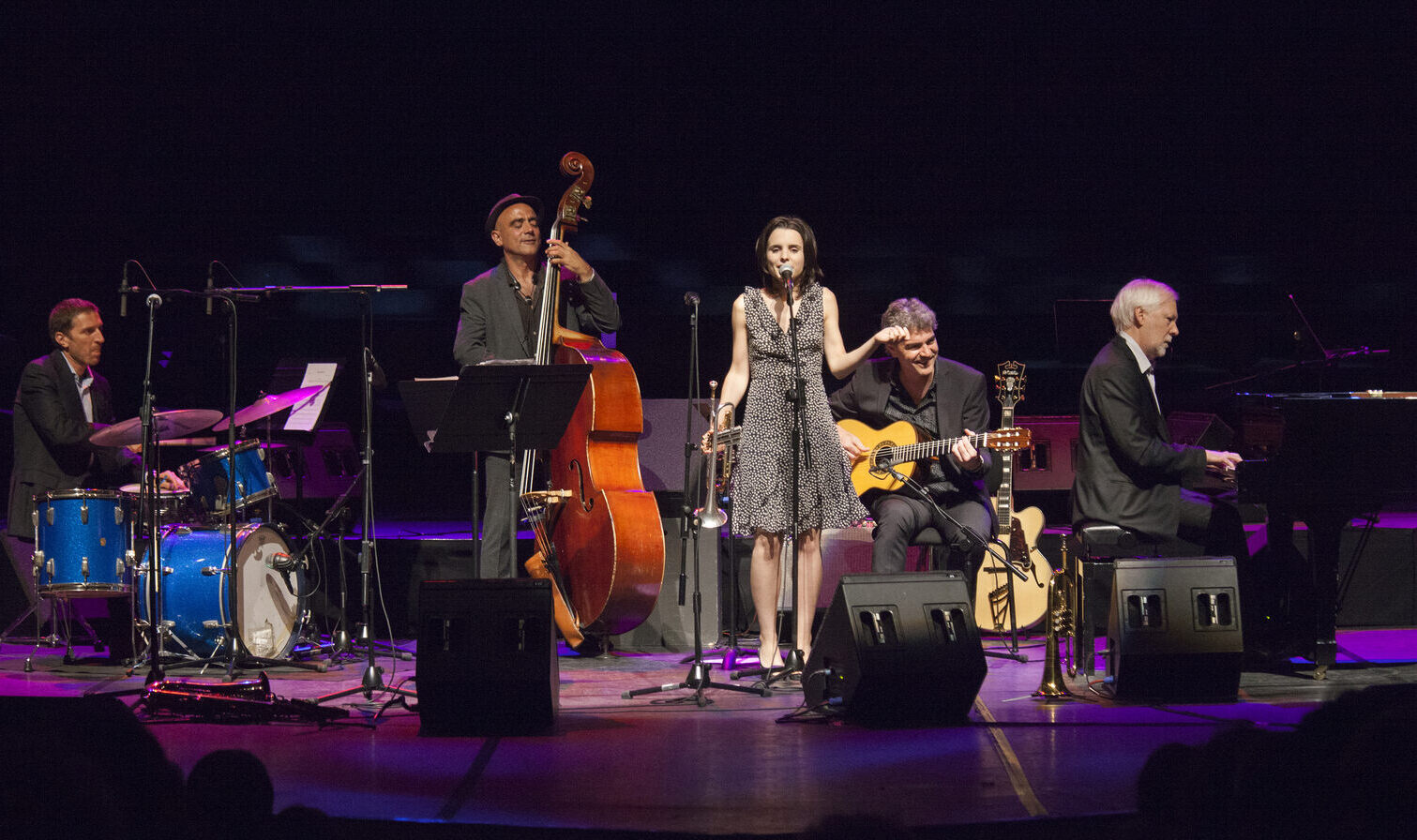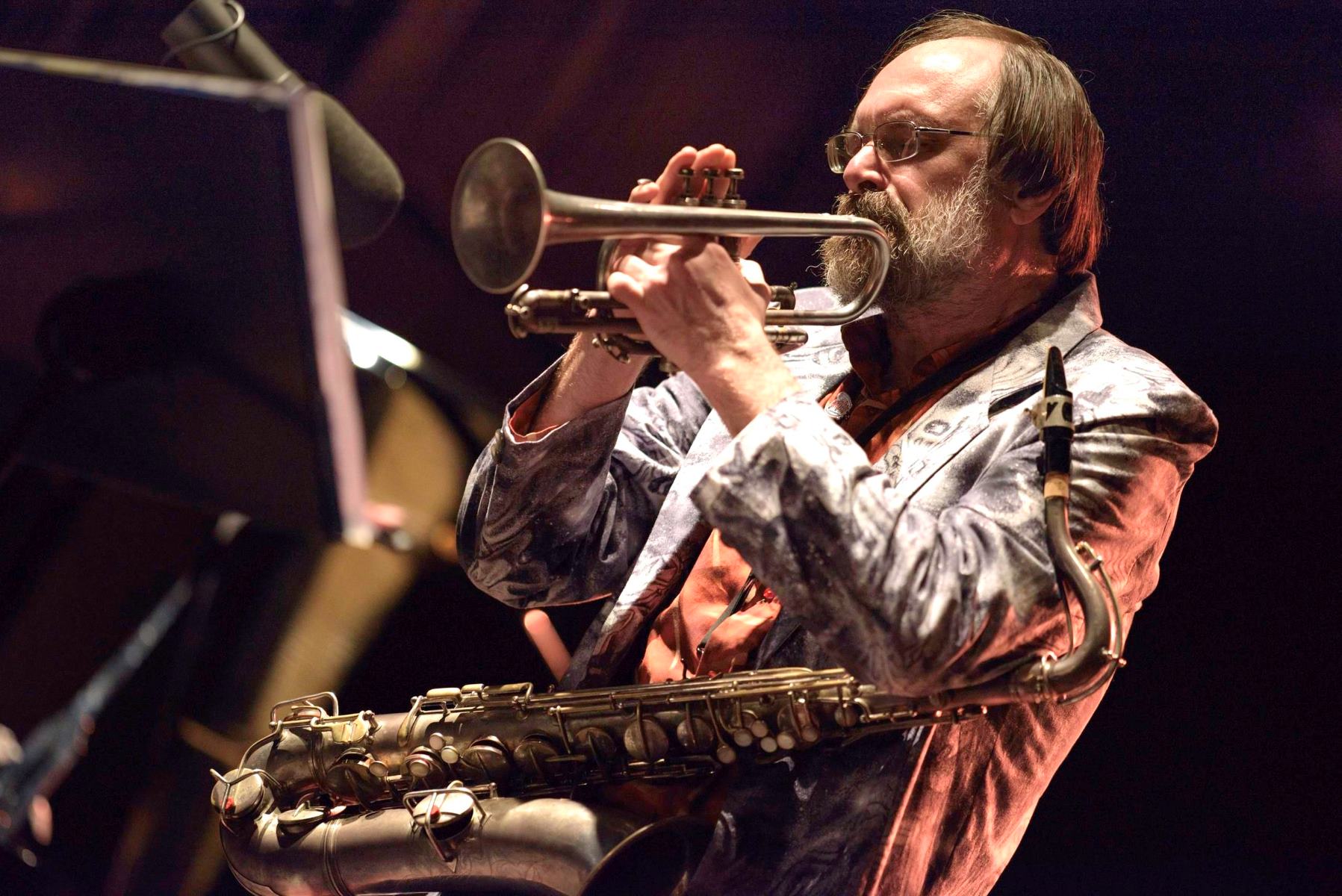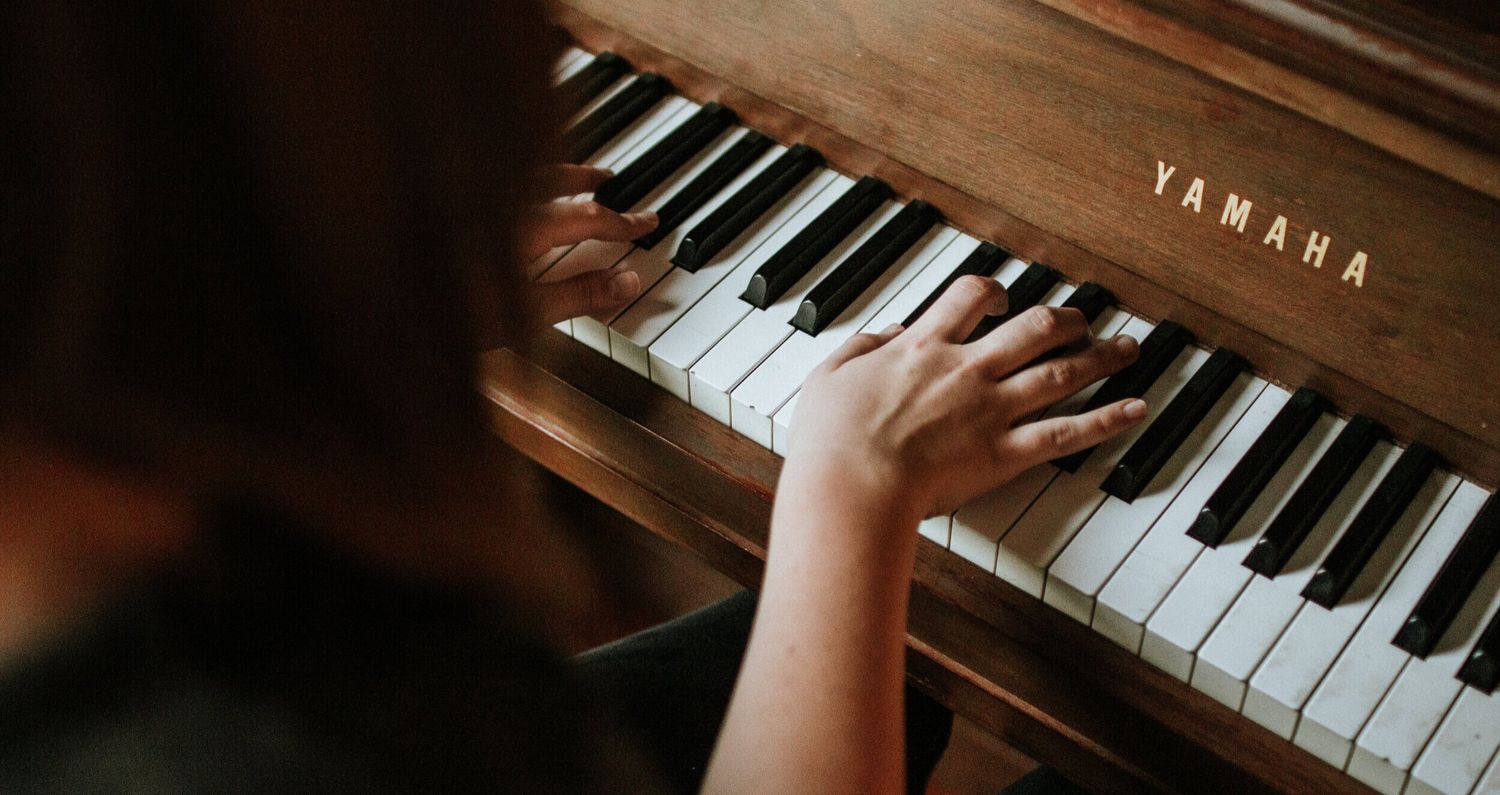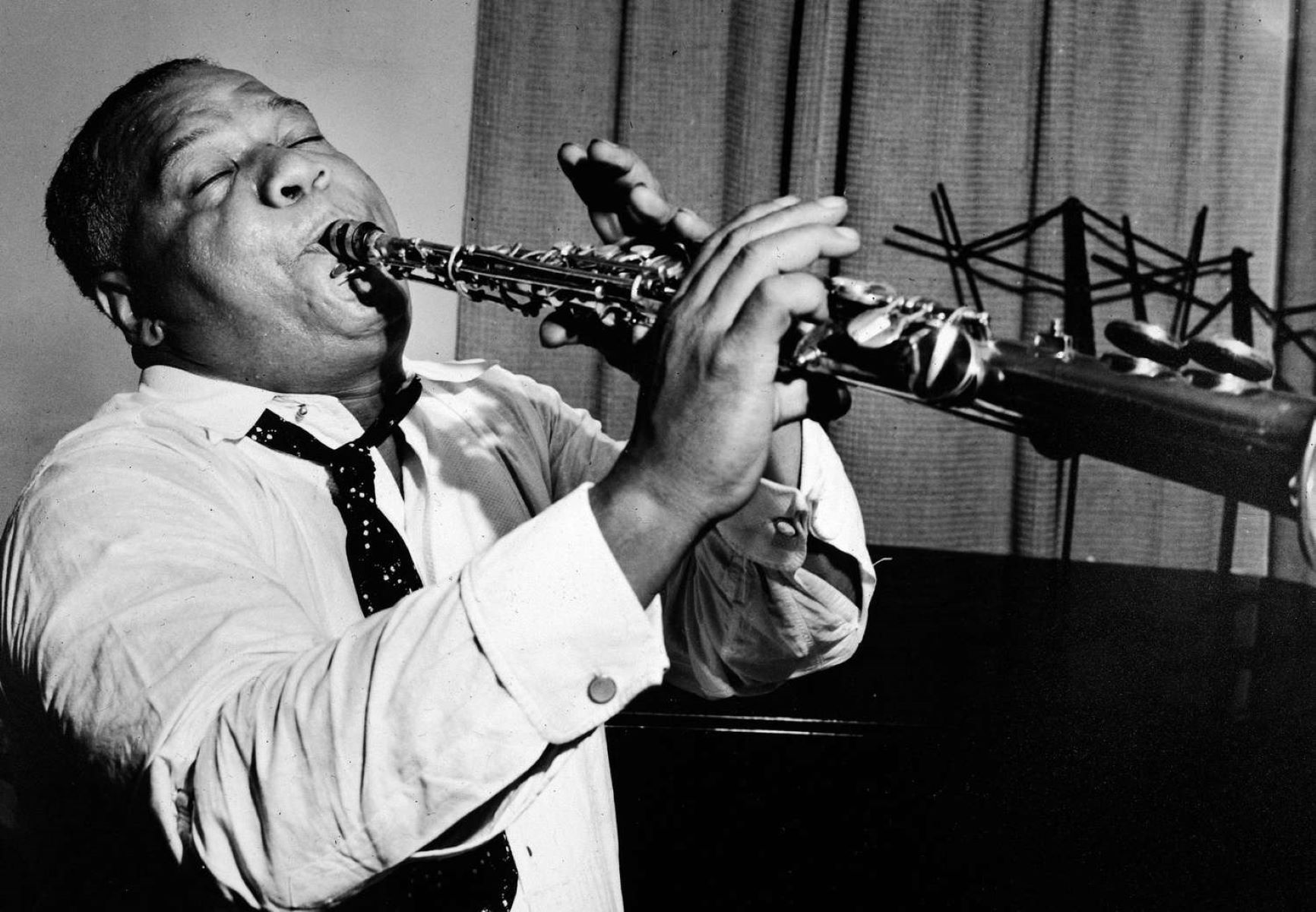

Jazz
What Was The First Style Of Jazz
Modified: January 22, 2024
Discover the origins of Jazz - the first style of music that blended African and European influences. Explore its roots and evolution throughout history.
(Many of the links in this article redirect to a specific reviewed product. Your purchase of these products through affiliate links helps to generate commission for AudioLover.com, at no extra cost. Learn more)
Table of Contents
Introduction
Jazz, often hailed as the epitome of American music, is a genre that encompasses a rich tapestry of styles and influences. It emerged in the early 20th century, born out of the African-American communities in New Orleans, Louisiana. With its roots deeply embedded in the musical traditions of African and African-American culture, jazz quickly became a powerful and innovative expression of creativity.
The history of jazz is a fascinating journey through time, with each era leaving its indelible mark on the genre’s evolution. From the early days of ragtime and blues to the modern sounds of fusion and contemporary jazz, the genre has continuously reinvented itself while staying true to its improvisational and expressive nature.
In this article, we will explore the origins of jazz and delve into the various early jazz styles that paved the way for its development. We will specifically focus on the first style of jazz, known as Dixieland Jazz, examining its characteristics, influence, and lasting legacy in the world of music.
Join us on this exploration of Dixieland Jazz as we delve into its rhythmic complexity, vibrant instrumentation, and infectious energy that continue to captivate audiences to this day.
Origin of Jazz
The origins of jazz can be traced back to the late 19th century in the city of New Orleans, Louisiana. This vibrant and culturally diverse city provided the perfect melting pot for various musical traditions to converge and create something entirely new.
The foundations of jazz were laid in the African and African-American communities, with influences from African music, European traditions, and the rhythmic elements of the blues. The African heritage brought polyrhythms, call-and-response patterns, and improvisation, while European music contributed instruments such as brass and woodwinds.
New Orleans, with its bustling port where people from various social backgrounds and cultures intermingled, became a hotbed for musical experimentation and cross-cultural collaborations. It was in the streets, dance halls, and neighborhoods of this vibrant city that jazz began to take shape.
The blend of African and European musical elements started with the syncopated rhythms of ragtime and the expressive melodies of the blues. Musicians would gather and play in social clubs, parades, and riverboats, infusing these syncopated rhythms with their own unique styles and improvisations.
One iconic event in jazz history is the formation of the first jazz band, the Original Dixieland Jass Band, in 1917. Their recordings, such as “Livery Stable Blues” and “Tiger Rag,” brought jazz to a wider audience and set the stage for the rapid spread of the genre.
The popularity of jazz grew exponentially in the 1920s, as radio broadcasts and record labels allowed the music to reach beyond New Orleans, spreading its infectious rhythms across the nation and eventually the world.
From its humble beginnings in New Orleans, jazz would go on to revolutionize music and influence numerous genres, including swing, bebop, cool jazz, and fusion. Its impact is still felt today, as jazz continues to evolve and inspire musicians and audiences around the globe.
Emergence of Early Jazz Styles
As jazz began to take shape in the early 20th century, several distinct styles and variations emerged, each contributing to the development and evolution of the genre. These early jazz styles were influenced by the cultural diversity and musical traditions of New Orleans, as well as the talents and innovations of individual musicians.
One of the first styles to emerge was ragtime, characterized by its syncopated rhythms and lively piano melodies. Ragtime gained popularity through the compositions of Scott Joplin, who blended African rhythms with European classical influences, creating a unique and spirited sound.
Another early jazz style was the blues. Originating in the African-American communities of the Deep South, the blues is known for its soulful melodies and expressive lyrics. It provided a foundation for jazz improvisation and served as a vehicle for storytelling and personal expression.
As jazz spread beyond New Orleans, it began to incorporate elements from other musical genres, giving rise to new styles. One such style was Chicago jazz, also known as Chicago-style or hot jazz. This style was characterized by its energetic and fast-paced rhythms, facilitated by the use of larger ensembles and a focus on solo improvisation.
New York, with its thriving music scene and influx of talented musicians, became another hub for jazz innovation. This led to the emergence of styles such as stride piano, which showcased virtuosic piano playing with elaborate improvisations and intricate rhythms.
Additionally, Kansas City jazz developed its own distinctive style, known for its hard-swinging rhythms, bluesy melodies, and prominent improvisation. It was in Kansas City that the big band format gained prominence, with larger ensembles featuring brass and woodwind sections.
These early jazz styles laid the foundation for the genre’s future development, serving as building blocks for the intricate improvisations, complex harmonies, and sophisticated arrangements that would become hallmarks of jazz.
As jazz continued to evolve and expand in popularity, these early styles would give way to new innovations and subgenres. Each style reflected the unique cultural and musical influences of its time and place, leaving a lasting impact on the history and evolution of jazz.
The First Style of Jazz: Dixieland Jazz
When exploring the early styles of jazz, one cannot overlook Dixieland Jazz, often referred to as “New Orleans Jazz.” As the first true style of jazz to gain widespread recognition, Dixieland Jazz holds a significant place in the history of the genre.
Dixieland Jazz emerged in the city of New Orleans in the early 20th century and was deeply influenced by the musical traditions of African and European cultures. It drew inspiration from ragtime, blues, and brass band music and incorporated them into a dynamic and spirited ensemble format.
The key characteristics that define Dixieland Jazz are its collective improvisation, infectious rhythms, and its lively and joyful energy. In a Dixieland Jazz ensemble, multiple musicians engage in simultaneous improvisation, creating a vibrant and unpredictable musical conversation.
The instrumentation typically includes a front line of trumpet, trombone, and clarinet, supported by a rhythm section consisting of piano, banjo or guitar, bass, and drums. This combination produces a distinct sound that is both melodic and rhythmically-driven.
One of the notable features of Dixieland Jazz is the use of “breaks” or short improvised solos within the arrangement. Each musician takes turns showcasing their skills, often engaging in playful musical dialogues with the other band members.
The repertoire of Dixieland Jazz includes up-tempo tunes, such as “Tiger Rag” and “When the Saints Go Marching In,” as well as soulful and expressive songs like “St. James Infirmary” and “Basin Street Blues.” The melodies intertwine with syncopated rhythms, creating a lively and captivating musical experience.
Dixieland Jazz gained popularity in the 1920s, thanks in part to the recordings of the Original Dixieland Jass Band, who were the first to introduce Dixieland Jazz to a wider audience. Their recordings, such as their rendition of “Dixieland Jass Band One-Step,” were commercial successes, paving the way for the genre’s recognition and influence.
While Dixieland Jazz was popular in its early years, its prominence waned as other styles of jazz emerged. However, its impact on the development of jazz should not be underestimated. The innovative improvisations, syncopated rhythms, and ensemble dynamics of Dixieland Jazz laid the groundwork for future styles and influenced generations of musicians.
Today, Dixieland Jazz continues to thrive in festivals, clubs, and gatherings, preserving the energy and spirit of the early days of jazz. Its timeless appeal and enduring legacy serve as a testament to the power and creativity of this pioneering style.
Characteristics of Dixieland Jazz
Dixieland Jazz, also known as New Orleans Jazz, is a style that is characterized by its distinctive musical elements and lively improvisations. Understanding the key characteristics of Dixieland Jazz helps to appreciate its unique sound and the impact it has had on the development of jazz as a whole.
Collective Improvisation: One of the defining features of Dixieland Jazz is its emphasis on collective improvisation. Unlike other styles where individual soloists take center stage, Dixieland Jazz showcases the entire ensemble engaging in simultaneous improvisation. Each musician contributes to the musical conversation, creating a dynamic and spontaneous performance.
Infectious Rhythms: Dixieland Jazz is known for its infectious rhythms that get feet tapping and bodies moving. The syncopated rhythms, often driven by the bass and drums, give the music its swinging and energetic feel. The interplay of the instruments creates a cohesive rhythm section that propels the music forward.
Front Line Instruments: The front line of a Dixieland Jazz ensemble typically consists of trumpet, trombone, and clarinet. These instruments blend together to create a rich and melodic sound. The trumpet often takes the lead with its soaring, improvisational lines, while the trombone adds depth and warmth. The clarinet adds a distinct and expressive voice with its unique timbre.
Rhythm Section: Supporting the front line, the rhythm section in Dixieland Jazz includes instruments such as piano, banjo or guitar, bass, and drums. The piano provides harmonies and rhythmic support, while the banjo or guitar adds a percussive and rhythmic quality to the music. The bass provides a solid foundation with its walking bass lines, and the drums add accents, fills, and drive to the overall sound.
Breaks and Interplay: Dixieland Jazz often features breaks, or short improvised solos, within the arrangement. Each musician takes turns showcasing their individual skills, engaging in playful and virtuosic musical conversations with the other band members. This creates a lively and interactive performance where the musicians react and respond to each other’s ideas.
Melodic Repertoire: The repertoire of Dixieland Jazz includes a mix of up-tempo tunes and soulful ballads. Up-tempo songs like “Tiger Rag” and “Royal Garden Blues” are characterized by their energetic melodies and fiery improvisations. On the other hand, slow tunes such as “St. James Infirmary” and “Basin Street Blues” evoke a more melancholic and reflective mood, allowing for emotional expression.
These characteristics are what make Dixieland Jazz a unique and captivating style. Its infectious rhythms, collective improvisation, and melodic repertoire continue to enchant audiences, perpetuating the vibrant spirit of jazz’s early years.
Influence and Legacy of Dixieland Jazz
The influence and legacy of Dixieland Jazz are far-reaching and significant, shaping the development of jazz and leaving an indelible mark on the music world. Despite its decline in popularity compared to other jazz styles, Dixieland Jazz continues to inspire and influence musicians to this day.
Dixieland Jazz played a crucial role in establishing jazz as a distinct and recognizable genre. Its vibrant energy and syncopated rhythms were instrumental in captivating audiences and spreading the popularity of jazz across the United States and beyond. The recordings of the Original Dixieland Jass Band, in particular, introduced Dixieland Jazz to a wider audience and paved the way for the genre’s recognition and influence.
One aspect of Dixieland Jazz that has had a lasting impact is its collective improvisation. This style of improvisation, where multiple musicians engage in simultaneous improvisation, created a dynamic and interactive musical experience. This approach deeply influenced later forms of jazz, such as swing and bebop, where musicians would take turns soloing but still maintain a sense of collective interaction.
The rhythmic complexity of Dixieland Jazz also left a lasting legacy. The infectious rhythms and syncopated patterns laid the foundation for later jazz styles, including the swing era’s emphasis on a steady, propulsive rhythm. Additionally, the rhythmic innovations of Dixieland Jazz influenced the development of Latin jazz, as musicians began exploring Afro-Cuban rhythms and incorporating them into the jazz vocabulary.
The instrumentation of Dixieland Jazz, with its front line of trumpet, trombone, and clarinet, became a standard template for many jazz groups. These instruments, with their versatile and expressive capabilities, continue to be essential components of jazz ensembles across different styles and periods.
Furthermore, Dixieland Jazz helped establish the importance of the rhythm section in jazz. The rhythmic foundation provided by the piano, banjo or guitar, bass, and drums became integral in driving the music forward and providing a solid platform for improvisation. This emphasis on rhythm and interaction between the rhythm section and the front line became a hallmark of jazz as a whole.
Today, Dixieland Jazz remains alive through dedicated musicians and enthusiasts who continue to perform and preserve the style. Festivals and jazz societies around the world celebrate the vibrant spirit of Dixieland Jazz, ensuring its legacy lives on and inspiring new generations of musicians to explore its timeless melodies and infectious rhythms.
Overall, the influence and legacy of Dixieland Jazz can be felt in the very essence of jazz music. Its collective improvisation, infectious rhythms, and distinctive instrumentation have shaped the evolution of jazz, making Dixieland Jazz an essential chapter in the story of this truly American art form.
Conclusion
Jazz, with its diverse and rich history, has evolved into an intricate tapestry of styles and influences. As we explored in this article, the first style of jazz, Dixieland Jazz, holds a special place in the genre’s development and legacy.
Originating in the vibrant city of New Orleans, Dixieland Jazz emerged as a fusion of African and European musical traditions. Its collective improvisation, infectious rhythms, and lively energy set the stage for the future evolution of jazz.
Dixieland Jazz’s impact goes beyond its early popularity. Its influence can be felt in the rhythmic complexity, interactive improvisation, and instrumentation of subsequent jazz styles. The legacy of Dixieland Jazz lives on through its rhythmic innovations, instrumental combinations, and its ability to captivate audiences with its dynamic and spirited performances.
Moreover, Dixieland Jazz served as a catalyst for the widespread recognition and popularity of jazz as a genre. The recordings of the Original Dixieland Jass Band brought jazz to a wider audience, setting the stage for its continued growth and development.
While Dixieland Jazz may have faded in popularity compared to other jazz styles, its influence remains vital. The collective improvisation, infectious rhythms, and melodic repertoire of Dixieland Jazz continue to inspire and shape the music world, reminding us of the transformative power of this innovative style.
As new generations of musicians delve into the roots of jazz, they discover the timeless melodies and vibrant energy of Dixieland Jazz. Festivals, clubs, and jazz societies celebrate and preserve its distinct sound, ensuring that its legacy will endure for years to come.
In conclusion, Dixieland Jazz holds a significant place in the history of jazz. Its infectious rhythms, collective improvisation, and vibrant instrumentation have left an indelible mark on jazz as a whole. By understanding the origins and characteristics of Dixieland Jazz, we gain a deeper appreciation for the evolution and diversity of this remarkable genre – a genre that continues to captivate and inspire audiences around the world.

